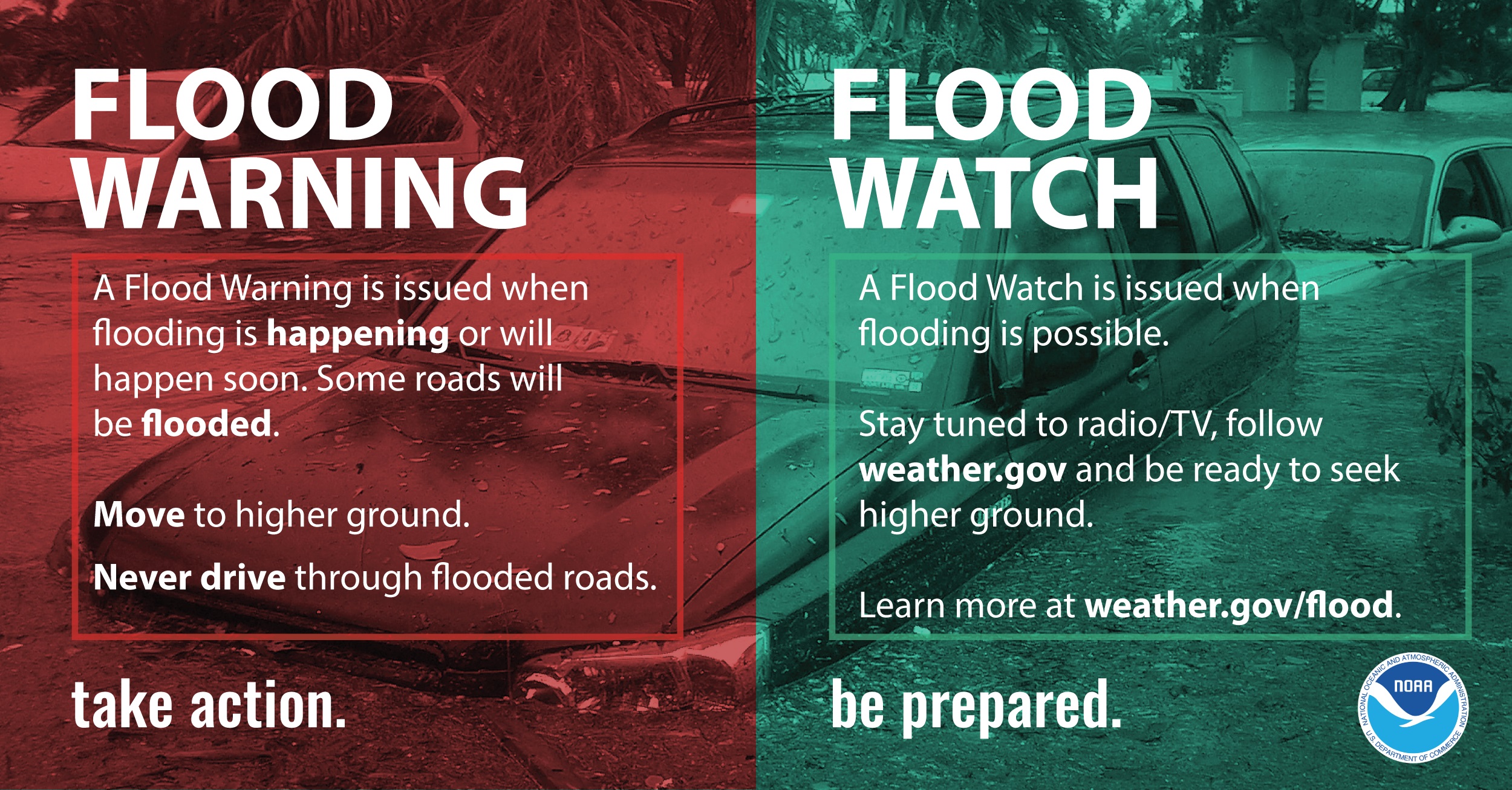Understanding Flood Risks: Your Guide To Flood Safety For Severe Weather Awareness Week

Table of Contents
Assessing Your Flood Risk
Understanding your personal flood risk is the first step in effective flood preparedness. This involves identifying potential hazards and understanding the different types of flooding that could affect your area.
Identifying Flood-Prone Areas
Determining if your property is located in a high-risk flood zone is critical. Several resources can help you with this assessment:
-
Utilize FEMA's flood map service: The Federal Emergency Management Agency (FEMA) provides detailed flood maps online. Simply enter your address to see your property's flood risk classification. This is an invaluable tool for understanding your level of exposure to flood hazards. Knowing your flood zone designation is essential for obtaining flood insurance.
-
Look for historical flood markers: Check your neighborhood for markers indicating previous flood levels. These markers provide visual evidence of past flooding events and can help gauge the potential severity of future floods. Understanding the historical impact of floods in your area gives crucial context to your current flood risk.
-
Consider the proximity to rivers, streams, and low-lying areas: Properties located near bodies of water or in low-lying areas are inherently more vulnerable to flooding. The closer you are to these areas, the higher your flood risk. Pay attention to the topography of your surrounding area and its potential impact on water flow.
-
Observe the drainage patterns around your property: Poor drainage can exacerbate flooding. Observe how water flows around your property during periods of heavy rainfall. Identify potential drainage issues that could increase your flood risk.
Understanding Different Types of Flooding
Understanding the different types of flooding helps you anticipate potential threats and tailor your preparedness plan accordingly:
-
Flash floods: These rapid, intense floods often occur with little warning, typically caused by heavy rainfall or dam failures. Flash floods are particularly dangerous due to their speed and force.
-
Riverine floods: These floods result from prolonged heavy rainfall causing rivers and streams to overflow their banks. They typically develop more slowly than flash floods, giving more time for preparation, but they can still cause significant damage.
-
Coastal floods: These floods are primarily caused by storm surges and high tides associated with hurricanes and other severe coastal storms. Coastal areas are highly vulnerable to these types of flooding events.
-
Pluvial floods: These are urban floods resulting from intense rainfall overwhelming drainage systems. Poor urban planning and inadequate infrastructure contribute to pluvial floods.
Preparing for a Flood
Proactive preparation is key to minimizing the damage and ensuring the safety of your family during a flood.
Developing a Flood Preparedness Plan
A comprehensive plan is crucial. This includes:
-
Identifying safe locations for your family: Designate several potential evacuation routes and meeting points. Plan for various scenarios, considering potential road closures.
-
Preparing an emergency kit: Gather essential supplies, including bottled water, non-perishable food, first-aid kit, medications, flashlights, and a battery-powered radio. Consider including important documents in waterproof containers.
-
Establishing communication protocols: Designate a primary contact person outside the affected area to serve as a communication hub for your family.
-
Consider flood insurance: Flood insurance is often not included in standard homeowner's insurance policies. Check with your insurance provider to assess your coverage and consider purchasing a separate flood insurance policy.
Protecting Your Property
Several steps can help mitigate flood damage:
-
Elevate electrical systems and appliances: Moving these to higher ground reduces the risk of electrical hazards and damage.
-
Install flood barriers or sandbags: These barriers can help prevent water from entering your home.
-
Clear gutters and drains: Regular maintenance improves water flow and reduces the risk of water accumulating around your property.
-
Consider flood-proofing your home: This might involve waterproofing basements, installing sump pumps, or elevating your foundation.
Staying Safe During a Flood
Your personal safety is paramount during a flood.
Evacuating Safely
Knowing when and how to evacuate is critical:
-
Follow instructions from local authorities: Heed warnings and evacuation orders from emergency services.
-
Never drive through flooded areas: Flooded roads can be extremely dangerous. The depth of the water may be deceiving, and the road may be undermined.
-
Move valuables to higher levels: If time permits, move important documents, electronics, and other irreplaceable items to a safe, elevated location.
-
Be aware of potential hazards: Downed power lines and debris pose significant risks. Avoid contact with these hazards.
Protecting Yourself During and After the Flood
Prioritize your health and safety:
-
Wear protective gear: Use waterproof boots, gloves, and protective clothing to avoid exposure to contaminated water.
-
Avoid contact with floodwater: Floodwater is often contaminated with sewage and other hazardous materials.
-
Be aware of the risks of mold and mildew: After the flood subsides, be vigilant about mold growth and take appropriate steps for remediation.
-
Document damage: Take photos and videos of the damage to your property for insurance purposes.
Post-Flood Safety and Recovery
After the flood, it's crucial to take appropriate steps:
-
Contact your insurance company: Report the damage immediately to initiate the claims process.
-
Contact local authorities: Seek assistance with cleanup efforts and available resources.
-
Hire professional services: Major repairs and restoration often require specialized expertise.
Conclusion
Understanding and mitigating flood risks is crucial for protecting your family and property. By assessing your vulnerability, creating a preparedness plan, and taking appropriate safety measures, you can significantly reduce your risk during Severe Weather Awareness Week and beyond. Remember, being prepared is your best defense against the devastating impacts of flooding. Take action today to reduce your flood risks and safeguard your future. Learn more about minimizing your flood risks by researching local resources and government guidelines.

Featured Posts
-
 Traders Pare Bets On Boe Rate Cuts Pound Rises After Uk Inflation Data
May 25, 2025
Traders Pare Bets On Boe Rate Cuts Pound Rises After Uk Inflation Data
May 25, 2025 -
 Analyzing Apple Stock Aapl Identifying Key Support And Resistance
May 25, 2025
Analyzing Apple Stock Aapl Identifying Key Support And Resistance
May 25, 2025 -
 Team Principal Toto Wolff On George Russells Performance A Response
May 25, 2025
Team Principal Toto Wolff On George Russells Performance A Response
May 25, 2025 -
 Carolina Country Music Fest 2025 Sells Out A Record Breaking Year
May 25, 2025
Carolina Country Music Fest 2025 Sells Out A Record Breaking Year
May 25, 2025 -
 Hells Angels Uncovering The Facts
May 25, 2025
Hells Angels Uncovering The Facts
May 25, 2025
